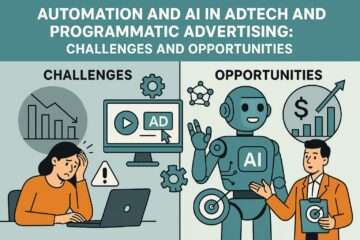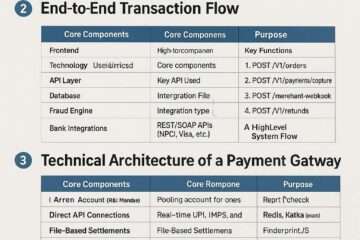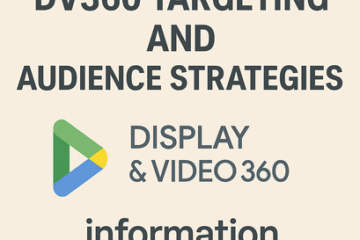
Gigico AI: Revolutionizing Ad Tech and Disrupting Demand-Side Platforms
The advertising technology (Ad Tech) industry is undergoing a seismic shift, driven by the rapid adoption of artificial intelligence (AI) and automation. At the forefront of this transformation is Gigico AI, a company introducing an innovative AI-powered media manager, Gigi, designed to redefine how agencies and advertisers leverage demand-side platforms (DSPs). With its unique approach to agentic AI, Gigico AI is poised to disrupt the Ad Tech ecosystem, particularly the business of DSPs, by enhancing efficiency, scalability, and performance. This article explores the features of Gigico AI, its potential to disrupt the DSP landscape, and the challenges and opportunities it faces in this dynamic industry.
Features of Gigico AI
Gigico AI’s flagship product, Gigi, is described as a “media manager built to think like your best strategist, crunch numbers like your strongest analyst, and scale like software.” Its features are tailored to address the inefficiencies of traditional DSP workflows while empowering agencies to deliver superior client outcomes. Below are the key features of Gigico AI:
1. Agentic AI-Powered Media Management
Gigi leverages agentic AI, a form of artificial intelligence capable of autonomously performing complex tasks and making decisions. Unlike traditional AI tools that require constant human oversight, Gigi can execute full-funnel advertising strategies across all ad formats supported by Amazon’s DSP. This autonomy reduces the time spent on repetitive tasks, allowing media managers to focus on high-level strategy and client relationships.
2. Unified Workflow Integration
One of Gigi’s standout features is its ability to integrate Amazon DSP and Amazon Marketing Cloud into a single, seamless workflow. This eliminates the bifurcation that often complicates campaign management, providing agencies with a streamlined process for planning, executing, and optimizing campaigns. The unified workflow enhances efficiency and improves campaign performance by enabling real-time data collaboration.
3. Scalability Without Linear Headcount Growth
Traditional agencies scale by hiring more staff as their client base grows, leading to a fixed ratio of full-time employees (FTEs) to clients. Gigi disrupts this model by enabling exponential scalability without proportional headcount increases. By automating time-consuming tasks, Gigi allows agencies to manage more clients with existing teams, improving margins and transforming how agencies are valued.
4. First-Party Data Collaboration
Gigi’s 1P Platform offers a private and secure environment for agencies and advertisers to collaborate using first-party data with Amazon Ads. This feature is particularly valuable in an era of increasing privacy regulations and the phasing out of third-party cookies, as it ensures compliance while enabling personalized ad targeting.
5. Enhanced Performance and Client Satisfaction
Early adopters of Gigi have reported significant time savings and improved advertising performance. By combining strategic thinking with analytical precision, Gigi delivers richer product experiences and better campaign outcomes. Its AI-native design allows for continuous optimization, ensuring ads are more effective and clients are more satisfied.
6. Support for Full-Funnel Strategies
Gigi supports full-funnel advertising strategies, covering awareness, consideration, and conversion stages. This comprehensive approach ensures that agencies can deliver cohesive campaigns that align with client goals across the entire consumer journey.
Disrupting the Ad Tech Business of DSPs
Demand-side platforms (DSPs) like The Trade Desk, Google’s Display & Video 360, and Amazon DSP are critical components of programmatic advertising, enabling advertisers to buy ad inventory across multiple publishers efficiently. However, DSPs often require significant manual input, complex integrations, and specialized expertise, which can create bottlenecks for agencies. Gigico AI’s Gigi is poised to disrupt this landscape by addressing these pain points and redefining the role of DSPs in Ad Tech.
1. Reducing Dependency on Manual Processes
DSPs rely heavily on human operators to set up campaigns, adjust bids, and optimize performance. Gigi’s agentic AI automates these processes, reducing the need for manual intervention and enabling faster, more efficient campaign execution. This automation challenges the traditional DSP model by shifting the value proposition from platform capabilities to AI-driven outcomes.
2. Enhancing Agency Efficiency and Margins
By enabling agencies to scale without linear headcount growth, Gigi disrupts the economic model of DSP-dependent agencies. Agencies using Gigi can handle more clients and campaigns without proportional cost increases, leading to improved operating margins. This financial advantage could pressure DSP providers to innovate or risk losing market share to AI-driven solutions like Gigi.
3. Competing with DSP-Native Tools
Amazon DSP, for example, offers robust tools for advertisers, but Gigi differentiates itself by providing a “demonstrably better customer experience.” Its AI-native design and unified workflow outperform native DSP tools in terms of ease of use and performance, positioning Gigi as a direct competitor to DSPs’ built-in management features.
4. Empowering Agencies in a Consolidating Market
The Ad Tech industry is in a consolidation phase, with private equity firms and large players acquiring smaller companies to bolster capabilities. Gigi empowers agencies to remain competitive by leveraging AI to deliver superior results without relying solely on DSP innovations. This democratization of advanced technology could disrupt the dominance of large DSP providers.
5. Aligning with the Shift to AI-Driven Advertising
The broader Ad Tech industry is moving toward AI-driven solutions, with 80% of U.S. consumers using AI-generated content for searches and companies like Visa and Mastercard experimenting with AI agents for purchases. Gigi’s focus on agentic AI aligns with this trend, positioning it to capture market share from DSPs that lag in AI adoption.
Challenges Ahead
While Gigico AI has significant disruptive potential, it faces several challenges in reshaping the DSP landscape and scaling its impact in the Ad Tech industry.
1. Adoption and Integration Barriers
Convincing agencies to adopt Gigi requires overcoming resistance to change and demonstrating clear ROI. Agencies with established DSP workflows may hesitate to integrate a new AI tool, especially if it requires retraining staff or restructuring processes. Additionally, integrating Gigi with non-Amazon DSPs could pose technical challenges, limiting its applicability in diverse Ad Tech stacks.
2. Trust and Transparency
Trust is a critical issue in AI-driven advertising, with only 51% of consumers trusting AI for shopping-related tasks. Gigico AI must ensure that Gigi’s data usage is transparent and compliant with privacy regulations like GDPR and CCPA. Building trust with both agencies and end consumers will be essential to widespread adoption.
3. Competition from Established Players
Major DSP providers like The Trade Desk and Google are investing heavily in AI and automation. These incumbents have vast resources, established client bases, and integrated ecosystems, posing a competitive threat to Gigico AI. To succeed, Gigi must consistently outperform these players in performance and user experience.
4. Ethical and Accuracy Concerns
AI tools, including generative AI, face challenges related to inaccuracy and ethical data usage. Gigi must mitigate risks of incorrect campaign optimizations or biased targeting to maintain credibility. Ensuring a “human touch” remains part of the advertising process will also be critical to addressing ethical concerns.
5. Skills Gaps in Agencies
The rapid adoption of AI in Ad Tech requires agencies to upskill their teams. A survey found that 57% of business leaders lack confidence in their leadership’s AI skills, which could hinder Gigi’s adoption. Gigico AI must provide robust training and support to help agencies leverage Gigi effectively.
Opportunities Ahead
Despite these challenges, Gigico AI is well-positioned to capitalize on several opportunities that could solidify its role as a disruptor in the Ad Tech industry.
1. Growing Demand for AI-Driven Solutions
The Ad Tech industry is experiencing a surge in demand for AI-powered tools, with generative AI spending projected to reach $175–$250 billion by 2027. Gigi’s agentic AI aligns with this trend, offering agencies a competitive edge in delivering personalized, efficient campaigns.
2. Expansion Beyond Amazon DSP
While Gigi currently focuses on Amazon DSP, there is significant potential to expand its capabilities to other DSPs like The Trade Desk or Google’s DV360. By becoming a platform-agnostic solution, Gigico AI could capture a larger share of the programmatic advertising market.
3. Enabling Sustainable Advertising
Sustainability is becoming a priority in Ad Tech, with advertisers seeking vendors that prioritize green energy and ethical standards. Gigico AI can differentiate itself by incorporating sustainability metrics into Gigi’s optimization algorithms, appealing to environmentally conscious brands.
4. Partnerships and Beta Programs
Gigico AI’s closed beta program, launched in May, provides an opportunity to refine Gigi based on real-world feedback from early agency partners. Expanding these partnerships and showcasing success stories can drive broader adoption and credibility.
5. Redefining Agency Valuation
By improving margins and scalability, Gigi has the potential to transform how agencies are valued in the market. Agencies adopting Gigi could attract investment or acquisition interest, creating new financial opportunities for Gigico AI and its partners.
Conclusion
Gigico AI’s Gigi represents a bold step forward in the Ad Tech industry, leveraging agentic AI to disrupt the traditional DSP model. Its features—autonomous media management, unified workflows, scalability, and first-party data collaboration—address key pain points in programmatic advertising, empowering agencies to deliver better results with greater efficiency. By reducing dependency on manual processes and enhancing agency margins, Gigi challenges the dominance of DSPs and aligns with the industry’s shift toward AI-driven solutions.
However, Gigico AI must navigate challenges such as adoption barriers, trust issues, and competition from established players. By capitalizing on opportunities like growing AI demand, sustainability, and strategic partnerships, Gigico AI can solidify its position as a disruptor. As the Ad Tech landscape continues to evolve, Gigi’s ability to deliver measurable value and redefine agency operations will determine its success in reshaping the future of programmatic advertising.
The advertising technology (Ad Tech) industry is undergoing a seismic shift, driven by the rapid adoption of artificial intelligence (AI) and automation. At the forefront of this transformation is Gigico AI, a company introducing an innovative AI-powered media manager, Gigi, designed to redefine how agencies and advertisers leverage demand-side platforms (DSPs). With its unique approach to agentic AI, Gigico AI is poised to disrupt the Ad Tech ecosystem, particularly the business of DSPs, by enhancing efficiency, scalability, and performance. This article explores the features of Gigico AI, its potential to disrupt the DSP landscape, and the challenges and opportunities it faces in this dynamic industry.
Features of Gigico AI
Gigico AI’s flagship product, Gigi, is described as a “media manager built to think like your best strategist, crunch numbers like your strongest analyst, and scale like software.” Its features are tailored to address the inefficiencies of traditional DSP workflows while empowering agencies to deliver superior client outcomes. Below are the key features of Gigico AI:
1. Agentic AI-Powered Media Management
Gigi leverages agentic AI, a form of artificial intelligence capable of autonomously performing complex tasks and making decisions. Unlike traditional AI tools that require constant human oversight, Gigi can execute full-funnel advertising strategies across all ad formats supported by Amazon’s DSP. This autonomy reduces the time spent on repetitive tasks, allowing media managers to focus on high-level strategy and client relationships.
2. Unified Workflow Integration
One of Gigi’s standout features is its ability to integrate Amazon DSP and Amazon Marketing Cloud into a single, seamless workflow. This eliminates the bifurcation that often complicates campaign management, providing agencies with a streamlined process for planning, executing, and optimizing campaigns. The unified workflow enhances efficiency and improves campaign performance by enabling real-time data collaboration.
3. Scalability Without Linear Headcount Growth
Traditional agencies scale by hiring more staff as their client base grows, leading to a fixed ratio of full-time employees (FTEs) to clients. Gigi disrupts this model by enabling exponential scalability without proportional headcount increases. By automating time-consuming tasks, Gigi allows agencies to manage more clients with existing teams, improving margins and transforming how agencies are valued.
4. First-Party Data Collaboration
Gigi’s 1P Platform offers a private and secure environment for agencies and advertisers to collaborate using first-party data with Amazon Ads. This feature is particularly valuable in an era of increasing privacy regulations and the phasing out of third-party cookies, as it ensures compliance while enabling personalized ad targeting.
5. Enhanced Performance and Client Satisfaction
Early adopters of Gigi have reported significant time savings and improved advertising performance. By combining strategic thinking with analytical precision, Gigi delivers richer product experiences and better campaign outcomes. Its AI-native design allows for continuous optimization, ensuring ads are more effective and clients are more satisfied.
6. Support for Full-Funnel Strategies
Gigi supports full-funnel advertising strategies, covering awareness, consideration, and conversion stages. This comprehensive approach ensures that agencies can deliver cohesive campaigns that align with client goals across the entire consumer journey.
Disrupting the Ad Tech Business of DSPs
Demand-side platforms (DSPs) like The Trade Desk, Google’s Display & Video 360, and Amazon DSP are critical components of programmatic advertising, enabling advertisers to buy ad inventory across multiple publishers efficiently. However, DSPs often require significant manual input, complex integrations, and specialized expertise, which can create bottlenecks for agencies. Gigico AI’s Gigi is poised to disrupt this landscape by addressing these pain points and redefining the role of DSPs in Ad Tech.
1. Reducing Dependency on Manual Processes
DSPs rely heavily on human operators to set up campaigns, adjust bids, and optimize performance. Gigi’s agentic AI automates these processes, reducing the need for manual intervention and enabling faster, more efficient campaign execution. This automation challenges the traditional DSP model by shifting the value proposition from platform capabilities to AI-driven outcomes.
2. Enhancing Agency Efficiency and Margins
By enabling agencies to scale without linear headcount growth, Gigi disrupts the economic model of DSP-dependent agencies. Agencies using Gigi can handle more clients and campaigns without proportional cost increases, leading to improved operating margins. This financial advantage could pressure DSP providers to innovate or risk losing market share to AI-driven solutions like Gigi.
3. Competing with DSP-Native Tools
Amazon DSP, for example, offers robust tools for advertisers, but Gigi differentiates itself by providing a “demonstrably better customer experience.” Its AI-native design and unified workflow outperform native DSP tools in terms of ease of use and performance, positioning Gigi as a direct competitor to DSPs’ built-in management features.
4. Empowering Agencies in a Consolidating Market
The Ad Tech industry is in a consolidation phase, with private equity firms and large players acquiring smaller companies to bolster capabilities. Gigi empowers agencies to remain competitive by leveraging AI to deliver superior results without relying solely on DSP innovations. This democratization of advanced technology could disrupt the dominance of large DSP providers.
5. Aligning with the Shift to AI-Driven Advertising
The broader Ad Tech industry is moving toward AI-driven solutions, with 80% of U.S. consumers using AI-generated content for searches and companies like Visa and Mastercard experimenting with AI agents for purchases. Gigi’s focus on agentic AI aligns with this trend, positioning it to capture market share from DSPs that lag in AI adoption.
Challenges Ahead
While Gigico AI has significant disruptive potential, it faces several challenges in reshaping the DSP landscape and scaling its imp act in the Ad Tech industry.
1. Adoption and Integration Barriers
Convincing agencies to adopt Gigi requires overcoming resistance to change and demonstrating clear ROI. Agencies with established DSP workflows may hesitate to integrate a new AI tool, especially if it requires retraining staff or restructuring processes. Additionally, integrating Gigi with non-Amazon DSPs could pose technical challenges, limiting its applicability in diverse Ad Tech stacks.
2. Trust and Transparency
Trust is a critical issue in AI-driven advertising, with only 51% of consumers trusting AI for shopping-related tasks. Gigico AI must ensure that Gigi’s data usage is transparent and compliant with privacy regulations like GDPR and CCPA. Building trust with both agencies and end consumers will be essential to widespread adoption.
3. Competition from Established Players
Major DSP providers like The Trade Desk and Google are investing heavily in AI and automation. These incumbents have vast resources, established client bases, and integrated ecosystems, posing a competitive threat to Gigico AI. To succeed, Gigi must consistently outperform these players in performance and user experience.
4. Ethical and Accuracy Concerns
AI tools, including generative AI, face challenges related to inaccuracy and ethical data usage. Gigi must mitigate risks of incorrect campaign optimizations or biased targeting to maintain credibility. Ensuring a “human touch” remains part of the advertising process will also be critical to addressing ethical concerns.
5. Skills Gaps in Agencies
The rapid adoption of AI in Ad Tech requires agencies to upskill their teams. A survey found that 57% of business leaders lack confidence in their leadership’s AI skills, which could hinder Gigi’s adoption. Gigico AI must provide robust training and support to help agencies leverage Gigi effectively.
Opportunities Ahead
Despite these challenges, Gigico AI is well-positioned to capitalize on several opportunities that could solidify its role as a disruptor in the Ad Tech industry.
1. Growing Demand for AI-Driven Solutions
The Ad Tech industry is experiencing a surge in demand for AI-powered tools, with generative AI spending projected to reach $175–$250 billion by 2027. Gigi’s agentic AI aligns with this trend, offering agencies a competitive edge in delivering personalized, efficient campaigns.
2. Expansion Beyond Amazon DSP
While Gigi currently focuses on Amazon DSP, there is significant potential to expand its capabilities to other DSPs like The Trade Desk or Google’s DV360. By becoming a platform-agnostic solution, Gigico AI could capture a larger share of the programmatic advertising market.
3. Enabling Sustainable Advertising
Sustainability is becoming a priority in Ad Tech, with advertisers seeking vendors that prioritize green energy and ethical standards. Gigico AI can differentiate itself by incorporating sustainability metrics into Gigi’s optimization algorithms, appealing to environmentally conscious brands.
4. Partnerships and Beta Programs
Gigico AI’s closed beta program, launched in May, provides an opportunity to refine Gigi based on real-world feedback from early agency partners. Expanding these partnerships and showcasing success stories can drive broader adoption and credibility.
5. Redefining Agency Valuation
By improving margins and scalability, Gigi has the potential to transform how agencies are valued in the market. Agencies adopting Gigi could attract investment or acquisition interest, creating new financial opportunities for Gigico AI and its partners.
Conclusion
Gigico AI’s Gigi represents a bold step forward in the Ad Tech industry, leveraging agentic AI to disrupt the traditional DSP model. Its features—autonomous media management, unified workflows, scalability, and first-party data collaboration—address key pain points in programmatic advertising, empowering agencies to deliver better results with greater efficiency. By reducing dependency on manual processes and enhancing agency margins, Gigi challenges the dominance of DSPs and aligns with the industry’s shift toward AI-driven solutions.
However, Gigico AI must navigate challenges such as adoption barriers, trust issues, and competition from established players. By capitalizing on opportunities like growing AI demand, sustainability, and strategic partnerships, Gigico AI can solidify its position as a disruptor. As the Ad Tech landscape continues to evolve, Gigi’s ability to deliver measurable value and redefine agency operations will determine its success in reshaping the future of programmatic advertising.























































